#COSMIC WEB
Explore tagged Tumblr posts
Text


Our cosmic neighborhood may be 10x larger
A team of international researchers guided by astronomers at University of Hawaiʻi Institute for Astronomy is challenging our understanding of the universe with groundbreaking findings that suggest our cosmic neighborhood may be far larger than previously thought. The Cosmicflows team has been studying the movements of 56,000 galaxies, revealing a potential shift in the scale of our galactic basin of attraction.
A decade ago, the team concluded that our galaxy, the Milky Way, resides within a massive basin of attraction called Laniākea, stretching 500 million light-years across. However, new data suggests that this understanding may only scratch the surface. There is now a 60% probability that we are part of an even grander structure, potentially 10 times larger in volume, centered on the Shapley concentration—a region packed with an immense amount of mass and gravitational pull. The findings were recently published in Nature Astronomy.
“Our universe is like a giant web, with galaxies lying along filaments and clustering at nodes where gravitational forces pull them together,” said UH Astronomer R. Brent Tully, one of the study’s lead researchers. “Just as water flows within watersheds, galaxies flow within cosmic basins of attraction. The discovery of these larger basins could fundamentally change our understanding of cosmic structure.”
Vast cosmos
The universe’s origins date back 13 billion years when tiny differences in density began to shape the cosmos, growing under the influence of gravity into the vast structures we see today. But if our galaxy is part of a basin of attraction much larger than Laniākea, which means immense heaven in the Hawaiian language, it would suggest that the initial seeds of cosmic structure grew far beyond current models.
“This discovery presents a challenge: our cosmic surveys may not yet be large enough to map the full extent of these immense basins,” said UH astronomer and co-author Ehsan Kourkchi. “We are still gazing through giant eyes, but even these eyes may not be big enough to capture the full picture of our universe.”
Gravitational forces
The researchers evaluate these large-scale structures by examining their impact on the motions of galaxies. A galaxy between two such structures will be caught in a gravitational tug-of-war in which the balance of the gravitational forces from the surrounding large-scale structures determines the galaxy’s motion. By mapping the velocities of galaxies throughout our local universe, the team is able to define the region of space where each supercluster dominates.
The researchers are set to continue their quest to map the largest structures of the cosmos, driven by the possibility that our place in the universe is part of a far more expansive and interconnected system than ever imagined.
TOP IMAGE: Galaxy motions converge into colored basins of attraction. The Milky Way is shown as the red dot. Credit University of Hawaiʻi
LOWER IMAGE: Laniākea, an immense supercluster of galaxies, including our own. Credit University of Hawaiʻi
8 notes
·
View notes
Text
"Astronomers have discovered a huge filament of hot gas bridging four galaxy clusters. At 10 times as massive as our galaxy, the thread could contain some of the Universe’s ‘missing’ matter, addressing a decades-long mystery."
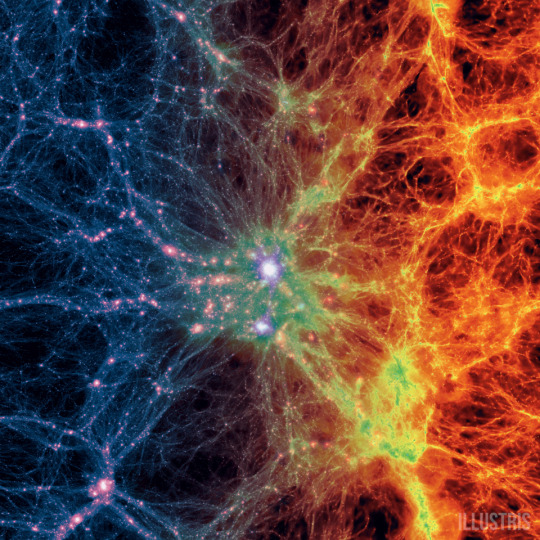
(Simulation of the cosmic web- credit)
"Over one-third of the ‘normal’ matter in the local Universe – the visible stuff making up stars, planets, galaxies, life – is missing. It hasn’t yet been seen, but it’s needed to make our models of the cosmos work properly.
Said models suggest that this elusive matter might exist in long strings of gas, or filaments, bridging the densest pockets of space. While we’ve spotted filaments before, it’s tricky to make out their properties; they’re typically faint, making it difficult to isolate their light from that of any galaxies, black holes, and other objects lying nearby.
New research is now one of the first to do just this, finding and accurately characterising a single filament of hot gas stretching between four clusters of galaxies in the nearby Universe.
As well as revealing a huge and previously unseen thread of matter running through the nearby cosmos, the finding shows how some of the densest and most extreme structures in the Universe – galaxy clusters – are connected over colossal distances.
It also sheds light on the very nature of the ‘cosmic web’, the vast, invisible cobweb of filaments that underpins the structure of everything we see around us."
continue reading article
#astronomy#cosmology#esa#cosmic web#universe#space#interconnectedness#connection#energy#plasma#density#matter#plasma physics#filaments#plasma filaments#myriad#structure#galaxies#galaxy clusters#threads#scale#science
2 notes
·
View notes
Note
favorite word?
cosmic
sorry i took so long to answer, i was considering this one very seriously for a few days
this comes from a moment when i was watching How the Universe Works (highly recommend) and Dr Michelle Thaller said that there is a huge web of galaxies in the universe that astronomers call the cosmic web
it was such a starry eye moment for me. knowing that all of our galaxies are strewn together in a web-like structure. jaw dropping stuff
also thanks for the ask you're one of the first people to ever give me an ask since i abandoned my Voltron specialty
xoxo
3 notes
·
View notes
Text
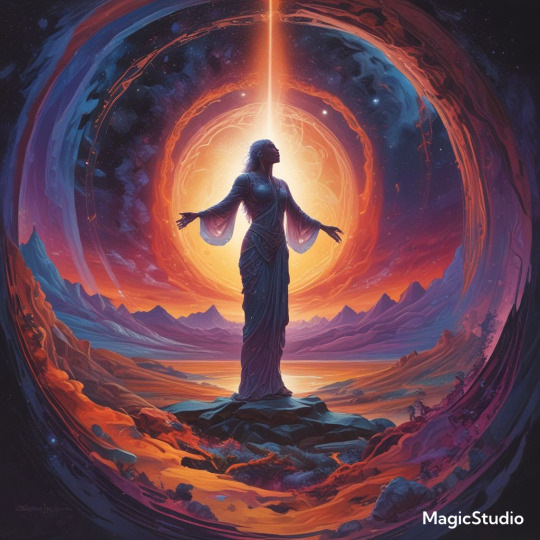
Unveiling the Cosmic Dance: From Milkomeda to Laniakea, Across the Vast Void
The vastness of the universe is impressive. It consists of billions of galaxies that extend over billions of light years. But within this immense expanse, our cosmic neighborhood, the so-called local universe, has a special significance. Here we find our home galaxy, the Milky Way, and countless other celestial bodies that shape our understanding of the cosmos. Let's embark on a journey through the local universe and explore the fascinating structures of galaxy groups, clusters and superclusters and their role in the larger structure of the cosmos.
Our immediate cosmic family is the Local Group, a collection of galaxies held together by gravity. This small-scale structure consists of the Milky Way, the Andromeda Galaxy (M31), the Triangulum Galaxy (M33), and about 50 dwarf galaxies. Although the Local Group may seem insignificant compared to the vastness of the Universe, it is a crucial laboratory for studying galaxy interactions and dynamics.
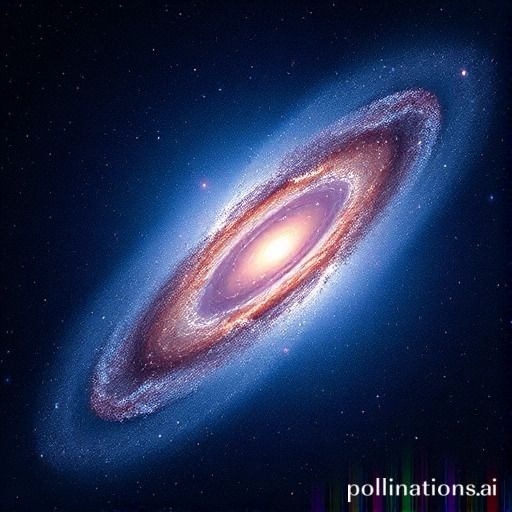
The Andromeda Galaxy, our nearest large star neighbor, is a stunning sight in the night sky. With its spiral arms and bright core, M31 is a prominent feature of the constellation Andromeda. The May 10, 2009 Astronomy Picture of the Day shows M31 and its companion, the elliptical galaxy M32, providing a stunning visual representation of the beauty and complexity of the Local Group.

One of the most fascinating aspects of the Local Group is the future collision between the Milky Way and the Andromeda Galaxy. In about 4.5 billion years, these two majestic galaxies will merge and form a new entity called "Milkomeda." This cosmic event highlights the dynamic nature of galactic interactions and the ever-evolving nature of our local Universe.
As we expand our view beyond the Local Group, we encounter larger and more diverse structures - galaxy groups and clusters. These are collections of galaxies held together by the gravitational forces that shape the Universe. Galaxy groups and clusters come in different sizes and densities, and each offers unique insights into the evolution and behavior of galaxies.

Paul Hickson identified Hickson Compact Groups as small, dense collections of galaxies. These groups are of particular interest because of their potential for galaxy mergers and interactions. In such a small space, galaxies can be subject to tidal forces, gas ejection and gravitational perturbations, leading to the formation of new types of galaxies and the reshaping of existing ones.

The Virgo Cluster is a prominent galaxy cluster in the local Universe, located in the constellation Virgo. It is a rich cluster containing thousands of galaxies, including giant elliptical galaxies and numerous spiral galaxies. The Virgo Cluster is a prime example of how galaxies gather and interact in a dense environment, influencing each other's evolution.
Rich galaxy clusters are cosmic giants containing thousands to tens of thousands of galaxies and huge amounts of hot gas. These clusters are not only impressive in size, but also crucial for understanding the distribution of matter in the universe and the role of dark matter.

The Coma Cluster in the constellation Coma Berenices is a remarkably rich galaxy cluster. It is one of the most distant objects visible to the naked eye and contains a diverse population of galaxies. The high density of galaxies and the hot gas within the cluster make the Coma Cluster an ideal laboratory for studying cluster dynamics and the effects of gravitational interactions on galaxy evolution.

The Abell Catalog, compiled by astronomer George Abell, is a comprehensive list of rich galaxy clusters. Named after their discoverer, these clusters are crucial for mapping the large-scale structure of the Universe. Abell clusters such as Abell 02352 and Abell 03496 (the Hercules Cluster) are massive structures that contribute significantly to our understanding of the cosmic web.

A critical aspect of galaxy clusters is the presence of dark matter, a mysterious and invisible substance that makes up most of the mass of these structures. The gravitational influence of dark matter is enormous, as it holds galaxies together in clusters and superclusters. In fact, most of the mass in galaxy clusters is dark matter, making it a dominant force in shaping the cosmic landscape.

The hot gas in dense galaxy clusters, the so-called intracluster medium, is a remarkable feature. Heated to millions of degrees, this gas emits X-rays that can outshine the light from individual galaxies. Studying this X-ray-emitting gas provides valuable insights into the temperature, density and overall mass distribution of the cluster. It is a powerful tool for astronomers to study the invisible dark matter and understand the dynamics of these massive structures.
As we travel through the local universe, we encounter superclusters, the largest known structures in the cosmos. Superclusters are vast collections of galaxy groups and clusters connected by galaxy filaments. They are the building blocks of the cosmic web, the complex network that spans the entire observable universe.

The Virgo Supercluster is our home supercluster, which contains the Local Group and the Virgo Cluster. It is a massive structure that spans 100 million light-years, making it a significant landmark in our cosmic neighborhood. The Virgo Supercluster is a crucial part of the larger Laniakea Supercluster, which defines our place in the cosmic web.

In 2014, astronomers defined the boundaries of the Laniakea Supercluster, a massive structure that encompasses and extends far beyond the Virgo Supercluster. Laniakea, which means "immeasurable sky" in Hawaiian, represents our cosmic home on a grand scale. Understanding superclusters like Laniakea is critical to mapping the large-scale structure of the universe and our place in it.

When we zoom in to even larger scales, we encounter the most extensive structures in the universe, including voids, filaments, and walls. These features form the cosmic web, a complex network that defines the distribution of matter in the universe.

Voids are vast, empty regions of space with few or no galaxies. They are the cosmic deserts separated by the complex filaments and walls of the cosmic web. Voids can extend for hundreds of millions of light years and are crucial for understanding the large-scale structure and evolution of the universe.
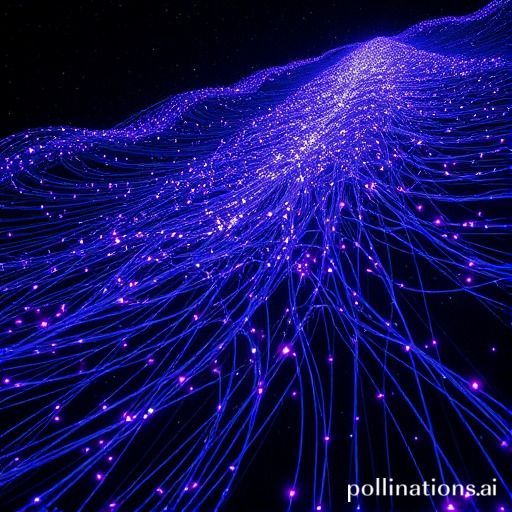
Filaments are long, thin structures that connect galaxy clusters and superclusters, while walls or sheets are relatively flat structures that contain numerous galaxies. These features form a cosmic fabric that determines the distribution of galaxies and superclusters. The "Great Wall" of Sloan, discovered by the Sloan Digital Sky Survey (SDSS), is a remarkable example of a huge sheet of galaxies that stretches for a billion light-years.

The Sloan Digital Sky Survey is a groundbreaking astronomical project that has revolutionized our understanding of the local universe and the cosmic web. SDSS has mapped the positions and distances of millions of galaxies, creating a detailed three-dimensional map of the cosmos. This survey has been crucial in identifying galaxy clusters, superclusters, and the complex filaments and voids that make up the cosmic web.
The local universe is a vibrant and dynamic environment filled with galaxies, groups, clusters, and superclusters. From the intimate interactions within the local group to the vast structures of the cosmic web, each element contributes to the grand narrative of the universe's evolution. Exploring the local universe allows us to understand our place in the cosmos and the complex relationships between celestial bodies. Studying galaxy groups, clusters, and superclusters provides valuable insights into the distribution of matter, the nature of dark matter, and the large-scale structure of the universe. As we continue to push the boundaries of astronomical research, the local universe will remain a crucial laboratory for testing our theories and expanding our knowledge of the cosmos. By unlocking the mysteries of our cosmic neighborhood, we come one step closer to understanding the vast and wondrous universe we inhabit.
Groups and Clusters of Galaxies (Jason Kendall, April 2024)
youtube
Where is Everything in The Universe Going? (History of the Universe, October 2024)
youtube
Sunday, October 13, 2024
#local universe#Youtube#galaxy groups#galaxy clusters#cosmic web#voids#filaments#astronomy#astrophysics#ai assisted writing#machine art#great attractor#presentation
2 notes
·
View notes
Text

#free to create magic#grateful#spiritual art#cosmic web#source love#spiritualgrowth#i love you#i am you#choose love#choose understanding#introspection#reflection
4 notes
·
View notes
Text
youtube
#brainykidz#educational#quizzes#trivia#youtube#solar system#planet venus#quiz time#venus#universe#cosmic web
0 notes
Text







Was your star next to mine ?
@skyrigel
#request web weave from inbox ☆#constellations#dark academia#art#astronomy#spilled writing#web weaving#stars#sky#cosmic#nebula#book qoute#love qoute#love#literature#spilled words#spilled thoughts#aesthetic#writers on tumblr#blue#jegulus#wolfstar#light academia#cottagecore#book and libraries#poem#poetry#ink#spilled ink#literary quotes
12K notes
·
View notes
Text
Graham Hancock❤️🔥Robert Schoch❤️🔥Ben van Kyrkwyk ❤️🔥Randall Carlson🙌🎶🛸🎶
“I believe we are a species with amnesia, I think we have forgotten our roots and our origins. I think we are quite lost in many ways. And we live in a society that invests huge amounts of money and vast quantities of energy in ensuring that we all stay lost. A society that invests in creating unconsciousness, which invests in keeping people asleep so that we are just passive consumers or products and not really asking any of the questions.”
— Graham Hancock
202 notes
·
View notes
Text
The Heaven Matrix: Exploring the Cosmic Web of Interconnectedness
stunnIng cosmiC web In the tapestry of human thought, few concepts have the ability to transcend culture, belief systems, and even science itself. The “Heaven Matrix” is one such idea—a metaphor for the interconnectedness that binds all things, where divine order, energy, and purpose converge to create the structure of existence. From ancient spiritual traditions to modern scientific theories,…
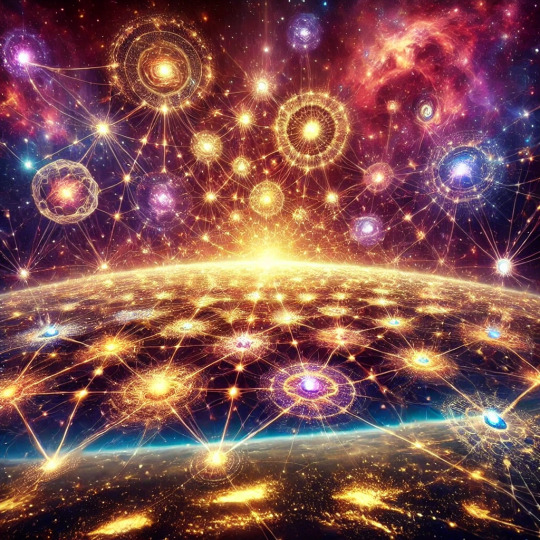
View On WordPress
#Chaos Theory#cosmic web#Heaven Matrix#Indra’s Net#Interconnectedness#Ma’at#spiritual frameworks#Taoist cosmology#Tree of Life#Unified Field
1 note
·
View note
Text
The Cosmic Web: Like Your Wi-Fi, But Way Cooler and Less Annoying
Alright, my cosmic kiddos, buckle up your brain-belts because we're about to dive into the universe’s version of the internet—the Cosmic Web. Yep, you heard me right. We're talking about a structure so epic, so mind-blowingly huge, it makes your favorite fantasy novel series look like a toddler’s bedtime story. The universe is no scatterbrained slacker; it’s got a game plan, and galaxies are its pieces, all playing in this cosmic latticework.
Picture this: You're binge-watching the latest season of "Stranger Things," right? And you notice how the plot intricately connects characters across different dimensions? Now, imagine those characters as galaxies, and the plot connections as filaments of dark matter stretching across the universe. Boom! That's the Cosmic Web in a nutshell. Galaxies aren’t just hanging out alone like wallflowers at a middle school dance—they’re networked in a vast, interconnected structure that puts any social media influencer's follower count to shame.
So, how do we get from the Big Bang’s fireworks to this intricate universe-sized spiderweb? Enter dark matter, our cosmic scaffolding. Dark matter is the universe's version of that one friend who organizes the group chats, makes the plans, but never shows up in the selfies. You can’t see it, but it's essential. Without dark matter, galaxies would just float around aimlessly like cats in a laser pointer showroom. It's the invisible glue that holds everything together, ensuring galaxies form and stick to their designated spots in the grand intergalactic dance-off.
But, let’s not just take my word for it. Imagine if the universe was a massive video game—say, Minecraft. In the beginning, you’ve got nothing but a blank space, right? No blocks, no mobs, nada. Then, dark matter comes in like the ultimate mod, laying down the foundation. It creates gravitational wells, and voila, regular matter falls into these wells, forming galaxies. It’s like building a Minecraft world but on a scale that would make even the most die-hard gamer’s head explode.
Scientists, our trusty cosmic detectives, have simulations and models to help us understand this massive construction project. These simulations are the universe's "behind-the-scenes" footage. They show us how dark matter creates the scaffolding first, then how regular matter—stuff that actually glows and can be seen—follows suit, gathering into galaxies that light up this immense network. It's kind of like watching the bloopers of your favorite movie, but instead of actors tripping over props, it's galaxies swirling into place.
Speaking of swirling, have you ever seen those mesmerizing screensavers that look like swirling galaxies? That’s basically the universe doing its thing. Galaxies form at the nodes of this cosmic web, where filaments intersect. These nodes are like the downtown intersections in a sprawling city, bustling with activity and more traffic than a Black Friday sale. And, just like those downtown areas, the further you go from the center, the quieter it gets. The universe’s suburbs, if you will.
Now, here's where it gets even more mind-blowing. This web isn’t static; it evolves. Imagine the universe’s web as a time-lapse video of a city growing from a sleepy hamlet into a bustling metropolis. Over billions of years, galaxies collide, merge, and grow. It’s like a cosmic soap opera with more drama than a season finale cliffhanger. One moment, galaxies are minding their own business, the next, they're in a gravitational embrace, merging into something new. It's the ultimate space mashup, without the autotune.
And the stars! Oh, the stars! They're like cosmic celebrities, gathering in clusters, shining bright, and sometimes going supernova for that dramatic exit. But these aren't just any celebs—they're the ones who really know how to party, spreading elements essential for life as we know it. Thanks to dark matter’s organizational skills, we get these star-studded galaxies instead of a random sprinkle of stars scattered across the void.
Let’s not forget those computer simulations I mentioned earlier. They’re like the ultimate universe-building sandbox games. Scientists input the laws of physics, add a sprinkling of dark matter, throw in some regular matter, and hit play. These simulations allow us to see how the universe evolved, kind of like replaying the most epic game of The Sims ever created. Except, instead of creating awkward family dynamics, they're recreating the entire cosmos.
But what’s the point of all this cosmic web construction? Why does the universe bother with all this structure instead of going for a minimalist chic look? Well, for one, it's all about balance. The universe is like a cosmic acrobat, constantly balancing gravitational forces. The Cosmic Web ensures that galaxies don't just drift apart into the endless void, never to be seen again. It's the ultimate safety net, keeping everything in check.
In our quest for astronomy education, understanding the Cosmic Web gives us a deeper insight into the universe's history and evolution. It’s like getting the full backstory on your favorite character—it just makes everything make more sense. Plus, it highlights the sheer awesomeness of the universe’s grand design (yeah, I said it, sue me).
So, next time you're struggling with your Wi-Fi connection, just remember: at least your internet isn’t trying to organize billions of galaxies into a cosmic web. And if it ever did, well, you’d probably need more than just a tech support call to fix it. The Cosmic Web is the universe’s magnum opus, a testament to the mind-boggling complexity and beauty of the cosmos. It’s like the ultimate crossover episode of everything you love about space—minus the bad Wi-Fi.
1 note
·
View note
Text

"Observations on the largescale structure of the Universe over the past decades have given rise to the notion of the ‘cosmic web’, which is nothing if not the cosmic electricity grid of the Electric Plasma Universe."
-Dr. Mae-Wan Ho
#cosmology#myriad celestia#cosmic web#creation#universe#as above so below#scaling#fractals#structure#symmetry#plasma physics#plasma#electromagnetism#electric universe#cosmic electricity grid#plasma universe#connection#life
8 notes
·
View notes
Text
jus the brownie <3






f2u w/ credit as usual
#rainbowcore#nostalgiacore#autism#f2u graphics#f2u with credit#f2u resources#artists on tumblr#digital art#blender#my art#web graphics#page decor#webcore#frodart#frodulus objects#cosmic brownie#nostaligiacore
2K notes
·
View notes
Text
Dark Matter is the Glue that Holds the Universe Together
0 notes
Text
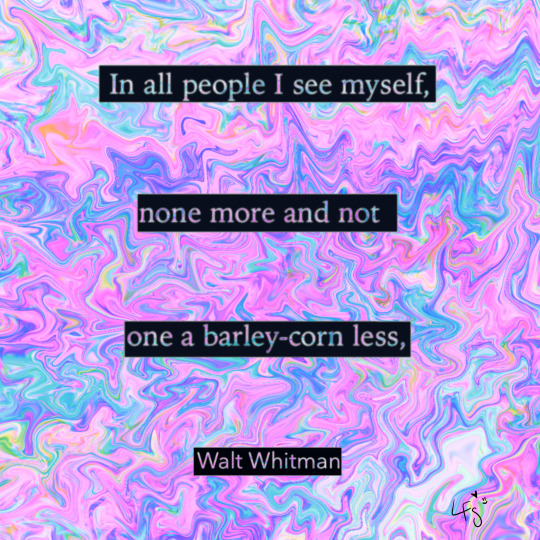
#free verse#leaves of grass#poetry#transcendentalism#walt whitman#nature#divine oneness#cosmic web#we are one
1 note
·
View note
Text

#free to create magic#grateful#cosmic web#vision board#magazine cutouts#success#succeed together#abundance#spiritual art#manifesting
1 note
·
View note
Text

Ripples through space
1 note
·
View note